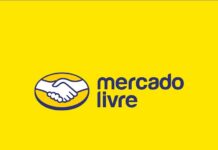Edson Perin
The Brazilian National Health Surveillance Agency (Agência Nacional de Vigilância Sanitária or Anvisa) is in the regulation phase of the digital package leaflet for medicines, determined in May of last year, when law nº 14.338/22 was sanctioned by then-president Jair Bolsonaro. With the digital leaflet, the Brazilian government intends to facilitate access by consumers, physicians, health institutions and pharmacies to information about medicines.
According to the new law, the digital leaflets must be hosted on links authorized by Anvisa and have at least the same content as the printed leaflet, in a format that facilitates the reading and understanding of the information and that allows the conversion of the text into audio and/or video, using a suitable application. In addition, Anvisa will be able to define which drugs will have only one package leaflet format.
To make package inserts more accessible, Anvisa included in its Regulatory Agenda for the years 2021 to 2023 the project that aims to review the rules for the preparation, harmonization, updating, publication and availability of package inserts for patients and professionals of health.

As an initial step in this review process, the agency published, on November 7, 2022, Ordinance 1.063/2022, which established the Working Group (WG) to monitor, evaluate and propose regulatory actions aimed at standardizing the digital leaflet of medicines, as provided by law.
The review will now follow the stages of Anvisa’s regulatory flow, contemplating the performance of a Regulatory Impact Analysis (RIA) and Public Consultation (CP).
Ricardo Verza, executive at GS1 Brasil, says that his role has been to observe the means by which information will be made available and not exactly the content itself. “The law gave Anvisa autonomy to define which products would not be required to have the [digital] leaflet. But this is another matter. The least the law says is: you have a paper leaflet and now you will have a digital leaflet”, says Verza.
The new law also changed the rules for drug traceability. The text revokes a provision of Law 11,903/09, which provided for a National Medicine Control System, centralized at Anvisa, for the storage of medication movements. The objective of the system would be to monitor all stages of the production chain of medicines circulating in the country.
With the new wording, traceability becomes the responsibility of the laboratories, which must have their own system that allows the preparation of a medication distribution map, identifying the commercialization and distribution quantities for each batch, and the recipients of the shipments.
Learn more: watch Ricardo Verza’s video interview.



















